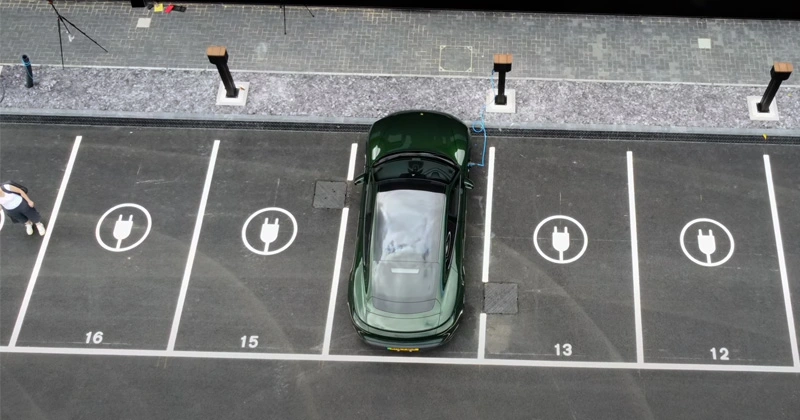Company Overview
PG&E is one of the largest combined natural gas and electric utilities in the United States, serving over 16 million people across 70,000 square miles of Northern and Central California. With a fleet of over 9,500 vehicles, PG&E has set a goal to electrify 100% of its fleet by 2045.
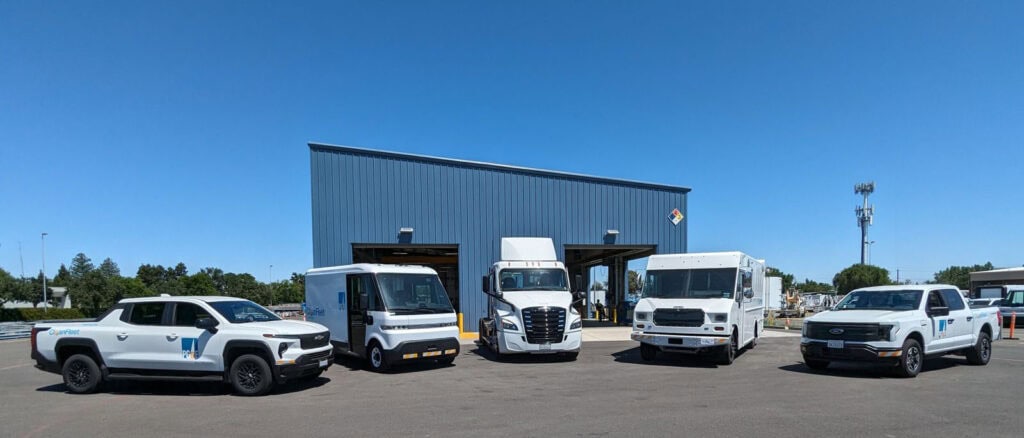
The Challenge
Electrifying one of the largest fleets in the country is no easy feat. As a forward-looking organization with ambitious sustainability goals, PG&E is leading by example—not only through the electrification of its own fleet, but also by helping set the pace for other fleet operators across its service territory who are looking to make the switch to electric. Electrifying one of the country’s largest utility fleets came with big operational, infrastructure, and user-experience challenges. Fleet electrification challenges included:

- Power Limitations at Scale
Some sites couldn’t support the electrical load required for large numbers of EV chargers. PG&E needed a way to take advantage of existing capacity—without significant investment in infrastructure. - Driver Experience
Fleet drivers needed a seamless and intuitive way to locate internal charging stations across the company’s vast territory. - Scalability
PG&E needed a future-proof solution to grow its charging capacity without overbuilding. - Software Gaps
Previous charging software vendors failed to meet PG&E’s operational, reporting, and support needs.
The Solution
PG&E selected Wevo Energy to manage nearly 4,000 EV chargers and support its growing fleet electrification program. Wevo’s software platform offered the flexibility, intelligence, and hands-on support PG&E needed to overcome infrastructure constraints and streamline operations. The solution includes:
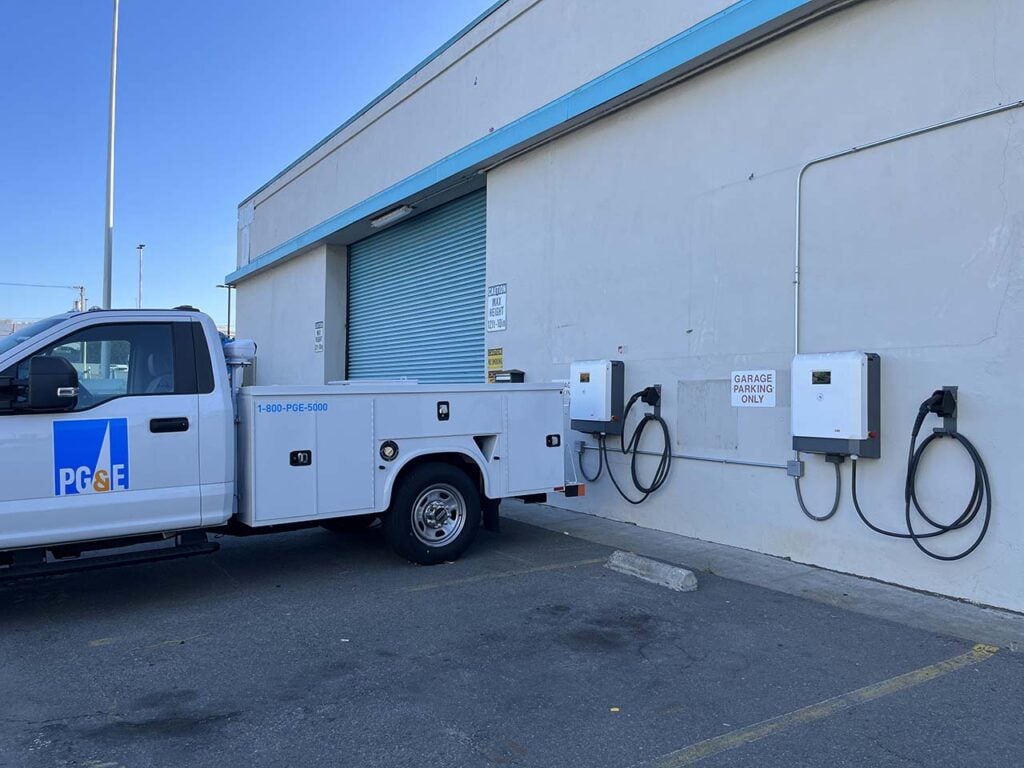
1. Intelligent Energy Management
Three-Phase Load Balancing: Wevo’s dynamic load management allows PG&E to install up to 3X more chargers on the same infrastructure—maximizing electrical capacity across L3 (480V panel) and L2 (208V subpanel) chargers and intelligently optimizing charging of heavy-duty and light-duty vehicles.
Wevo’s advanced load balancing also allows for trickle-charging, and can delay and ramp charging up and down during a session without user input for DCFCs. It also handles load balancing across mixed electric networks (480v and 208v) that have DCFCs installed on 480v panels and L2s on 208v providing efficient load balancing for sites where both heavy-duty and light-duty fleet vehicles are charged.
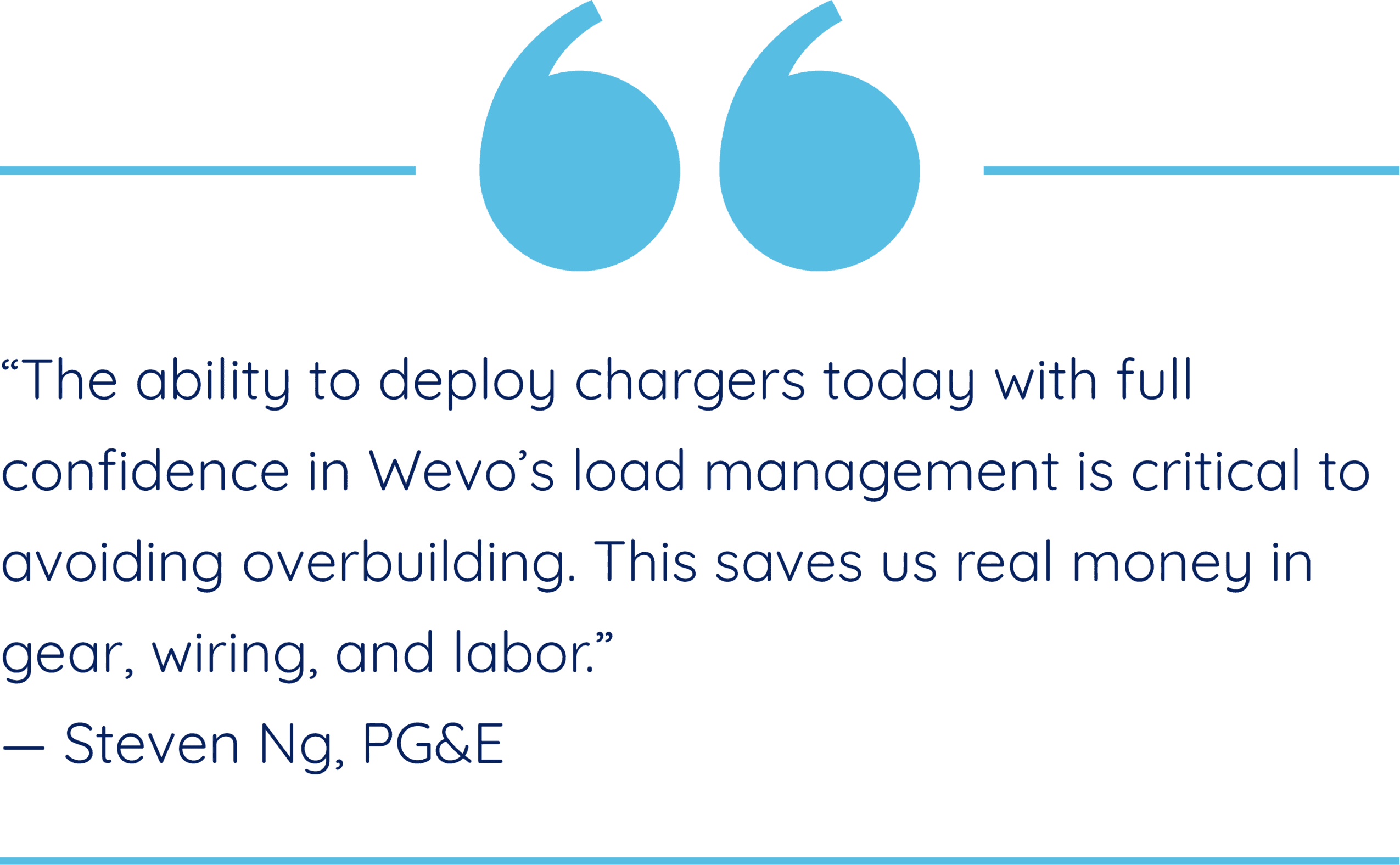
Time of Use Optimization: In addition to avoiding demand charges, Wevo’s software takes advantage of Time of Use (TOU) rates to minimize energy costs even further. By defaulting charging sessions to off-peak periods—such as overnight hours when electricity rates are significantly lower—Wevo’s technology helps ensure that energy charges, which make up the bulk of the electric bill, stay as low as possible. This strategic scheduling not only reduces operating expenses, but also aligns with grid-friendly behavior, avoiding charging during high-demand periods.
Avoiding Demand Charges: To help PG&E reduce electricity costs and avoid costly demand charges, Wevo implemented a smart charging strategy. Unlike energy charges, which are based on total consumption, demand charges are triggered by the peak power (kW) used during short, specific time intervals, in this case 15 minute intervals, in a billing cycle. This is especially challenging for large fleets charging simultaneously, as it can create sudden spikes in energy demand.
Wevo’s software helps mitigate this by using delayed charging and initiating sessions with a trickle current. This prevents abrupt load increases, reduces the risk of session failures, and avoids triggering peak demand charges. The result: a smoother load profile, less stress on the electrical grid during peak hours, and significantly lower electric bills—delivering real cost savings for PG&E and its customers.
2. Fleet-First Driver Experience
Tailored Charging Map: Wevo created a custom map that makes it easy for PG&E fleet drivers to locate and navigate to available chargers, reducing downtime and frustration across remote and urban areas.
Seamless Plug-and-Charge: PG&E needed a frictionless driver experience—no apps, no manual inputs. Wevo delivered a fully plug-and-charge solution that “just works”. This was achieved by pushing set configurations to chargers ensuring plug-and-charge works seamlessly.
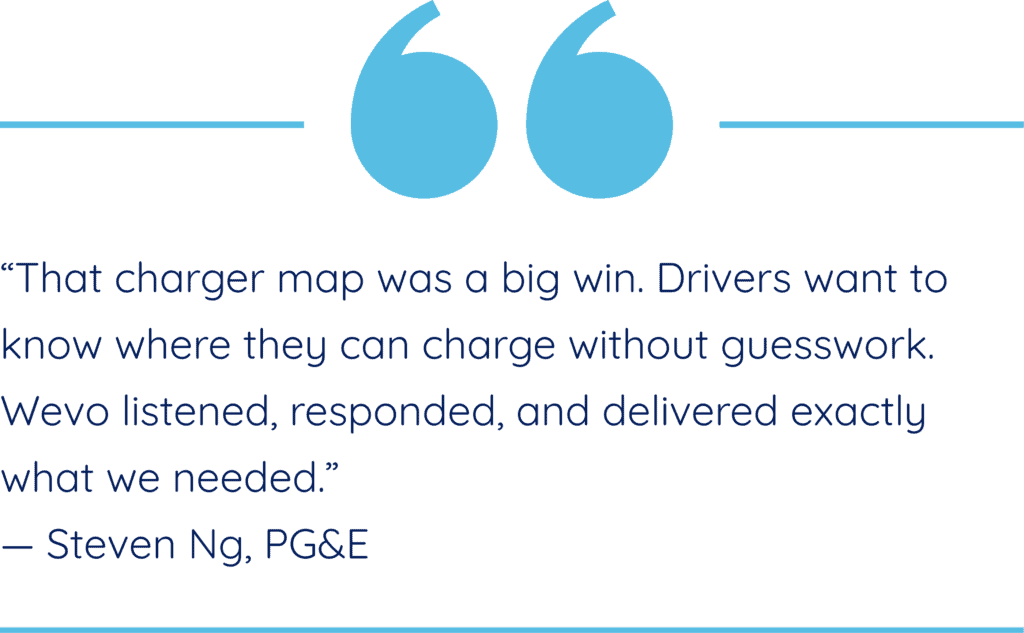
Flexible Driver Experience: Wevo offers PG&E a range of driving authentication methods, including RFID, mobile app, and the plug-and-charge options, which can be leveraged based on PG&E’s preferences and needs.
3. Tools for Scale and Control
Smart Reporting: PG&E needed custom reporting for internal stakeholders and regulatory compliance. Wevo built flexible, one-click reports.
Advanced Session Visibility: PG&E can access a full visualization of a site, seeing each individual session occur, and monitor for peaking load.
Access Control: Privileged access allows PG&E’s team to set-up their own power management settings – matching exactly what is on the site, and not waiting for a support team to set-up the controls for them.
4. A True Partner In Transition
From the pilot phase to scale-up, Wevo worked side-by-side with PG&E’s team—answering questions directly, avoiding red tape, and delivering features fast.
- PG&E was fully operational with Wevo in just 90 days.
- Wevo provided direct access to experts, fast responses, and an honest, collaborative approach every step of the way.
The Results
- Smarter Scaling
PG&E can now plan and build sites based on load-balancing and energy management capabilities—reducing costs, avoiding overbuilding, and eliminating the need for future infrastructure upgrades. - Immediate Cost Savings
Wevo’s platform is cost-effective, with even greater savings expected as delayed charging and energy optimization are fully implemented across the PG&E portfolio. - Prepared for Growth
Even as vehicle numbers remain in early phases, PG&E has the software and infrastructure in place to support thousands of vehicles, from light-duty to heavy duty, as well as support for both L2 and DCFC charging sessions, supporting a true mixed fleet use case now and into the future. - Trusted Partnership
PG&E cited Wevo’s transparency, responsiveness, and technical expertise as key factors in the program’s early success.
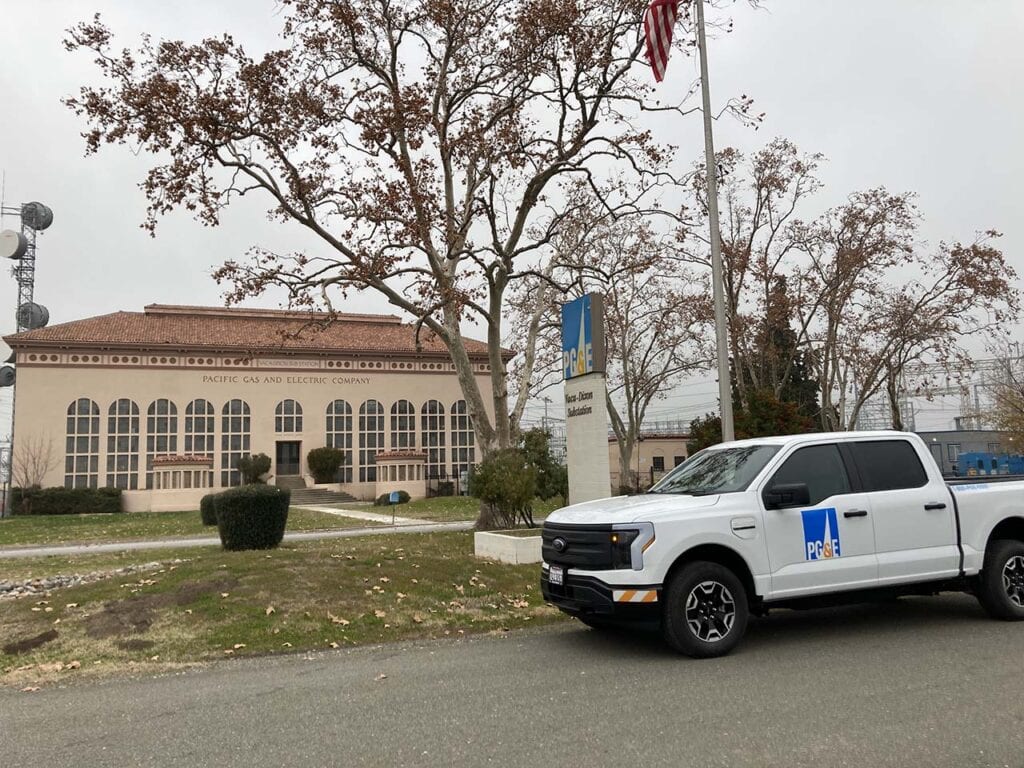
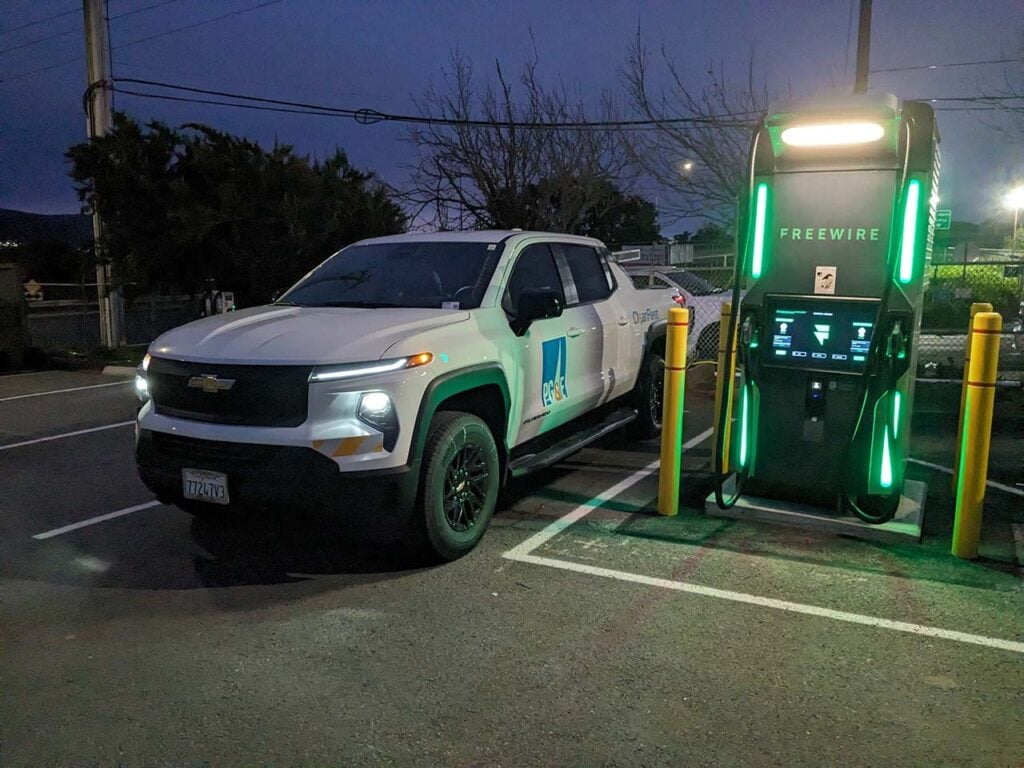
What’s Next
PG&E plans to fully activate energy management and time-of-use optimization in the coming year as EV fleet numbers grow. Additional reporting and access control features are in progress as well, with Wevo as an ongoing strategic partner.
